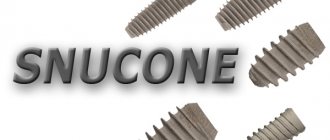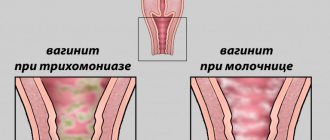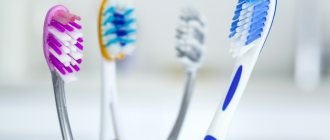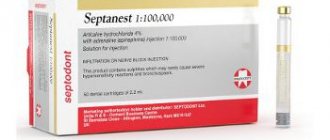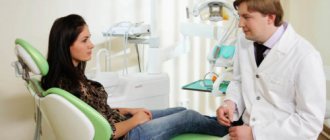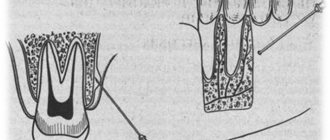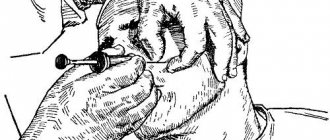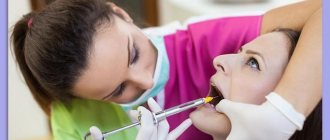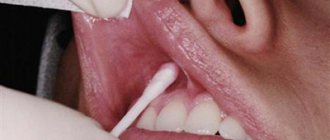November 29, 2021
166
Cosmetology involves performing various procedures that require pain relief. To do this, patients are injected or applied anesthetic drugs. Most solutions used today are non-invasive. In other words, they do not need to be injected under the skin. This is necessary to eliminate any discomfort.
General anesthesia
Anesthesia or general anesthesia is a procedure in which a person is put into a special state - the body does not react to external stimuli, one of which is pain. General anesthesia is performed using anesthetics that act on the central nervous system.
General anesthesia is given if there is a need to perform surgical procedures. The technique has a high level of complexity, so an anesthesiologist accompanies the operation. It calculates the correct dosage for a particular person. The well-being and even the life of the patient depends on it.
As a rule, local anesthesia is often used for aesthetic cosmetology, and anesthesia is done in rare cases, for example, if it is necessary to do deep peeling.
Anesthesia is perceived ambiguously by people. So, some are sure that anesthesia shortens life by several years. There is also a myth that says that drugs of this type make a person mentally ill. However, such statements are incorrect. Of course, risks exist, as in other areas of medicine, but experienced doctors can minimize them. Possible side effects include dizziness, headache, diarrhea, and vomiting.
Drugs used
The following drugs are used for topical anesthesia:
- Lidocaine. It can be in liquid form or in the form of gels, sprays, ointments. The drug is fast-acting. The duration of the effect is 25-30 minutes. Lidocaine should not be used in children under 10 years of age or in pregnant and lactating women.
- Desensetin. This is a gel whose main component is 15% lidocaine hydrochloride. Its action begins within 10 seconds after application. Desensetin is widely used in the removal of tartar and the treatment of periodontal diseases. The advantage of the drug is the fact that when it gets on the tongue it does not cause a burning sensation or unpleasant taste due to the presence of aromatic additives in the composition.
- Bumecaine. May be in the form of an ointment or liquid in an ampoule. Bumecaine is allowed for use in patients who have experienced a heart attack shortly before dental treatment. The drug has a delicate effect, and the duration of the effect reaches 40-45 minutes.
- Tetracaine. The intensity of the effect of this medication is similar to bumecaine. However, tktracaine is highly toxic and therefore should not be used in immunocompromised patients or those under the age of 18 years. If the dosage of the drug is incorrectly calculated, rough keloid scars will form on the inner surface of the cheeks and gums.
- Disilane. This is a very effective anesthetic at an affordable price. It is available in aerosol form. The drug is based on a 30% oily solution of benzocaine, which acts for 15-20 minutes. This period depends on the sensitivity of the patient. Disilane has a minimum of side effects, so it is often used in the treatment of children.
- Diplen LH. They are self-adhesive strips that have 2 layers and form a film that can be easily removed later. The first layer of strips is chlorhexidine. This substance dehydrates the treatment area. Lidocaine gel acts as an antiseptic. Diplene is used in combination with other methods of anesthesia (a needle can be inserted through the strips for injection).
In order for anesthesia to be effective and last the required amount of time, the specialist must choose the right drug and its dosage. The World of Dentistry clinic employs experienced doctors who have been providing painless treatment under topical anesthesia for many years.
Local anesthesia
Local anesthetic injections are designed to numb the area the doctor is working on. Such pain relief can be:
- Application. Special creams or gels are applied to the skin to help cope with discomfort.
- Infiltration. The medicine is injected under the skin, which blocks nerve impulses.
- Regional. The medication is injected into the area of the nerve trunk, which is responsible for a certain area of the body.
In injection cosmetology, anesthesia is selected taking into account factors such as the area of manipulation and the individual characteristics of the patient.
What is the procedure
The operating principle of topical anesthesia is to block sensory receptors. When applied to the surface of the mucous layer, the drug quickly penetrates to the nerve endings to a depth of 3-5 mm, blocking the passage of nerve impulses. The analgesic effect begins to appear within a few minutes and lasts up to half an hour, covering adjacent soft and hard tissues.
REFERENCE! The mucous membrane of the oral cavity is densely permeated with blood vessels, so non-injection anesthesia with surface anesthetics takes less time due to faster absorption of the drug.
Application anesthesia has its own list of disadvantages and advantages. Main advantages:
- complete painlessness of the procedure;
- there is no general toxic effect on the body;
- minimal risk of overdose (especially important when working with young children who find it difficult to choose the optimal dose of injectable drugs);
- ease of implementation (the application procedure does not require special skills from the doctor).
The main disadvantages of the method are the short duration of the analgesic effect and the shallow depth of impact. Some drugs can have a vasodilating effect, which increases bleeding during invasive procedures.
How is topical anesthesia performed in dentistry?
The method of implementation does not require special skills from the doctor, however, strict adherence to the instructions allows you to avoid unwanted effects (insufficient pain relief, overdose, tissue damage). Allergy testing is required. This is especially true if the drug contains highly allergenic ingredients, such as propolis.
ATTENTION! For maximum analgesic effect, on the eve of a visit to the dentist, avoid the use of alcohol-containing drugs - ethanol can reduce the effect of anesthetics.
Sequencing:
- The mucous membrane in the intervention area is treated with an antiseptic and dried. The abundance of saliva washes away the drug and interferes with its normal absorption into the gum tissue.
- Following the dosage, an anesthetic is applied (ointment, cream, gel is rubbed into the gum area, a spray or aerosol is sprayed over the surface). Be sure to take into account the location of the tooth, the depth of the intervention and the individual sensitivity of the patient. In particular, different doses of anesthetic will be required to numb incisors and molars.
- After 3-5 minutes (depending on the chosen composition and the individual sensitivity of the patient), the main procedure begins.
The pain relief time depends on the drug and lasts 10-30 minutes. This is taken into account when choosing an anesthetic and, as necessary, it is updated by applying a new batch of the substance.
REFERENCE! The most controversial form of anesthetic is the aerosol. It is quickly absorbed, but pain relief often covers the entire oral cavity. Extensive loss of sensitivity can provoke additional damage (biting the tongue, cheeks, impaired speech function).
Effective pain relief with Anesta-A cream
Cosmetologists must carefully select a local anesthetic, and the products used must have registration and permits for use in the Russian Federation. One of the most popular local anesthetics is Anesta-A. This drug is registered and has a certificate, so it can be used in medical clinics, beauty salons, tattoo parlors, etc. The drug is intended for topical anesthesia and is based on lidocaine and its derivatives. Differs from analogues in minimal allergy risks.
Indications and contraindications for the use of topical anesthesia
This type of pain relief is indicated in the following situations:
- Professional oral hygiene using ultrasound or AirFlow method.
- Tartar removal.
- Any minor surgical interventions on periodontal tissues. For example, treatment of gingivitis or early periodontitis.
- Opening of the gums during gumboil and other purulent inflammatory process.
- Partial pulp removal.
- Repair or correction of braces, retainers or various types of fixed dentures.
- Treatment of caries at the initial or middle stage.
- The need to eliminate excessive tooth sensitivity before whitening. Typically this indication applies to patients 30-40 years old. By this age, tooth enamel becomes more susceptible to external irritants and reacts to them even in the absence of caries. Painful sensations appear when eating hot or cold food.
Contraindications to the use of topical anesthesia:
- Heart rhythm disturbance.
- Tachycardia and other diseases of the cardiovascular system.
- Heart attack or stroke suffered not long before dental intervention.
- Diabetes mellitus of any form.
- Allergic reaction to an anesthetic drug.
During pregnancy and breastfeeding, the possibility of using topical anesthesia is determined individually for each patient. Numerous studies have not revealed any negative effects of drugs on mother and child. However, experts still use them with caution.
Stages of anaphylactic shock
There are several stages/phases that can be used to characterize the condition of anaphylactic shock and its course.
- The mild phase of shock is characterized by rashes and itching of the skin; heat and burning; runny nose and spasmodic cough; weakness and dizziness, pale complexion and lethargy.
Symptoms such as difficulty breathing, shortness of breath, nausea, abdominal pain, depression, lethargy and tachycardia may also be observed.
- The moderate stage of anaphylaxis occurs when the patient experiences general weakness, shortness of breath, blurred vision, numbness of the fingers/tongue, pain in various locations (abdomen, chest, heart, muscles, joints, lower back). Heart sounds are muffled or dull, and arrhythmia may occur. Severe sweating, nausea, bloating and diarrhea.
- The severe (fulminant) phase of anaphylactic shock occurs suddenly, and the patient may not have time to report his critical condition to the doctor. The whole body becomes pale (cyanosis in places), the pupils are dilated, and cold sweat appears on the forehead. There are no breath sounds, tonic and clonic convulsions, defecation and urination can be observed. In the end, the body suffers from vascular collapse and goes into a coma.
There are cases when the course of anaphylactic shock can be confused with psychopathological conditions and anaphylactoid reactions, such as loss of consciousness and fainting.
But it is worth remembering and monitoring the reasons for the appearance of the immune response. Also, less commonly, anaphylactic shock is similar to coma, aspiration, myocardial infarction, thromboembolism, sudden pneumothorax, hyperventilation syndrome and cold urticaria.
Advantages and disadvantages
The most significant advantage of application anesthesia is the speed of onset of the effect.
But there are other advantages:
- safety. Considering that the drug is applied exclusively superficially, there is no effect on deep tissues. Thus, the anesthesia does not interact with other medications;
- control of duration of action. The doctor determines the dosage to provide pain relief for a period of several minutes to several hours;
- minimization of adverse symptoms, which allows the use of pain relief for children in childhood.
As for the disadvantages, it is worth highlighting the following:
- the inability to choose a dosage when using aerosols, a high concentration of which is accompanied by penetration into the bloodstream, which affects the psyche;
- narrowing the range of applications due to limited penetration depth;
- pronounced property of vasodilation.
Anaphylactic shock: pathogenesis and etiology
This term was first coined in 1902 to refer to severe conditions and fatal reactions in dogs after repeated administration of sea anemone tentacle extract.
The development of anaphylactic shock (or anaphylaxis) is associated with a number of etiological factors caused by IgE mechanisms:
- medications (taking local anesthetics, sleeping pills, colloid solutions, metronidazole, cytostatics, nitrofurans, β-lactam antibiotics, B vitamins, folic acid, tetracycline, muscle relaxants, monoclonal antibodies, β-blockers, sulfonamides)
- vaccines (measles, whooping cough, tetanus, rubella, typhoid, diphtheria toxoid)
- enzymes (chymotrypsin, trypsin, streptokinase, aprotinin, penicillinase)
- antisera (tetanus, diphtheria, antilymphocyte globulin)
- taking hormones (parathyroid hormone, insulin, ACTH, progesterone, vasopressin, calcitonin)
- diagnostic agents (radiocontrast agents, decholin, fluorescein)
- animal saliva and venom (insect and snake bites)
- food products (shellfish, fish, peanuts, soybeans, nuts, spices, dairy products)
- inhalation allergens (household, epidermal, insect, pollen)
This list can be continued, but it is drugs, food products and insect venom that are in the TOP among the common factors causing anaphylaxis.
Nutritional supplements (sulfites, monosodium glutamate), physical activity, hormonal changes, blood transfusions, and topical medications are among the least common etiological factors for the occurrence of AS.
You can also mention the causes of anaphylaxis and AS caused by IgE-independent mechanisms:
- Transfusion of blood or its individual formed elements.
- Hypothermia and physical activity.
- Systemic mastocytosis.
- Idiopathic anaphylaxis.
- The body's reactions to radiocontrast agents, opioid analgesics, aspirin and non-steroidal anti-inflammatory drugs.
This also includes factors (including individual ones) that are related to the client and external circumstances:
- Lifestyle – bad habits (smoking, alcohol, drugs), physical activity, taking non-steroidal anti-inflammatory drugs.
- Individual factors of a person - age (especially the elderly), gender, infections, menstrual cycle, diet and nature of nutrition, psychogenic stress.
- Past / concomitant diseases - bronchial asthma, cardiovascular diseases, blood pressure, increase in the basic concentration of serum tryptase.
Diagnosis of anaphylactic shock
This process is not very different from a traditional allergology examination, and includes the following steps:
- Collecting an allergy history from the patient.
- Assessment of clinical symptoms.
- Carrying out diagnostic tests “in vivo” exclusively as prescribed by an allergist and with his participation.
- Application of instrumental, radiological, functional, genetic research methods.
- Detection of the level of tryptase, histamine, blood plasma, urine metabolites, IgE antibodies.
Possible side effects
We should not forget that any procedure, even the most seemingly safe one, can have side effects. What problems arise after injection cosmetology?
- Small bruises that disappear quickly. To avoid them, it is better not to take medications a week before the procedure that can slow down the process of blood clotting in the body. Alcohol can also cause hematomas. Therefore, it is better to give up alcoholic beverages 2 days before the procedure and not drink them for another 2 days after it. Cosmetologists also advise refraining for some time from sports activities and visiting baths and saunas.
- Infections of the skin and subcutaneous tissues. As a rule, they appear exactly in the place where the injection was given. Therefore, listen carefully and follow all the cosmetologist’s recommendations. Immediately after the procedure, do not use creams and decorative cosmetics; try to minimize all contact with the skin at the injection sites. It is not recommended to swim or take a bath immediately after the procedure. It is better to use only a shower for 2-3 days.
Much more serious consequences cannot be excluded, but, as a rule, this happens mainly when conducting sessions in various underground salons or where the necessary conditions of sterility and safety are not observed. Therefore, it is strongly recommended to do such injection cosmetology procedures only in good, trusted clinics.
Why clients choose Veronika Herba Beauty and Health Center:
- This is a beauty center where you can take care of yourself at a reasonable cost, while your face and/or body will be treated not by an ordinary cosmetologist, but by one of the best dermatologists in Moscow. This is a completely different, higher level of service!
- You can receive qualified help at any time convenient for you. The beauty center is open from 9:00 to 21:00, seven days a week. The main thing is to agree with your doctor in advance on the date and time of your appointment.
Sign up for a consultation with a specialist by phone +7 (495) 085-15-13
, and you will see for yourself!
